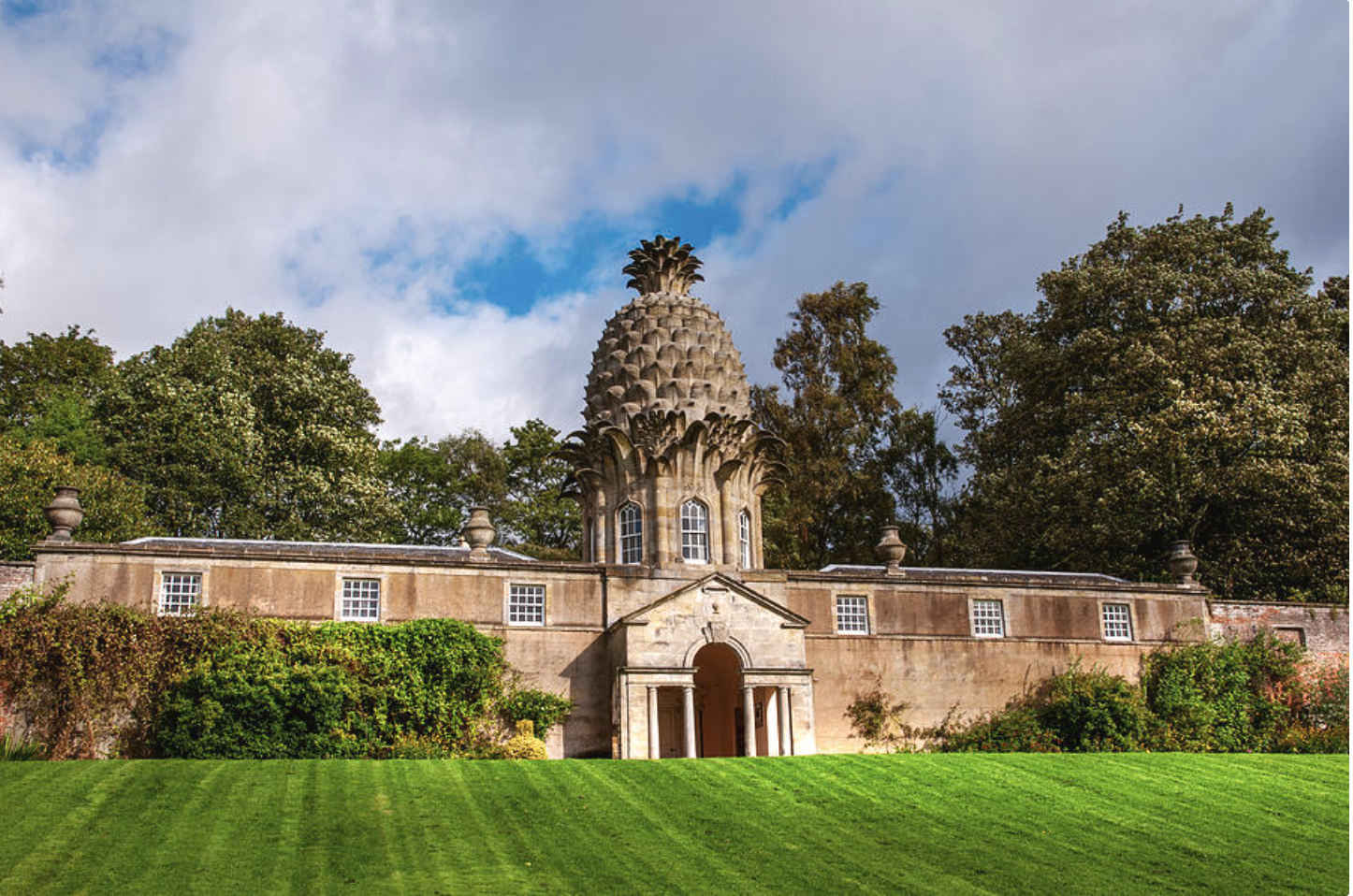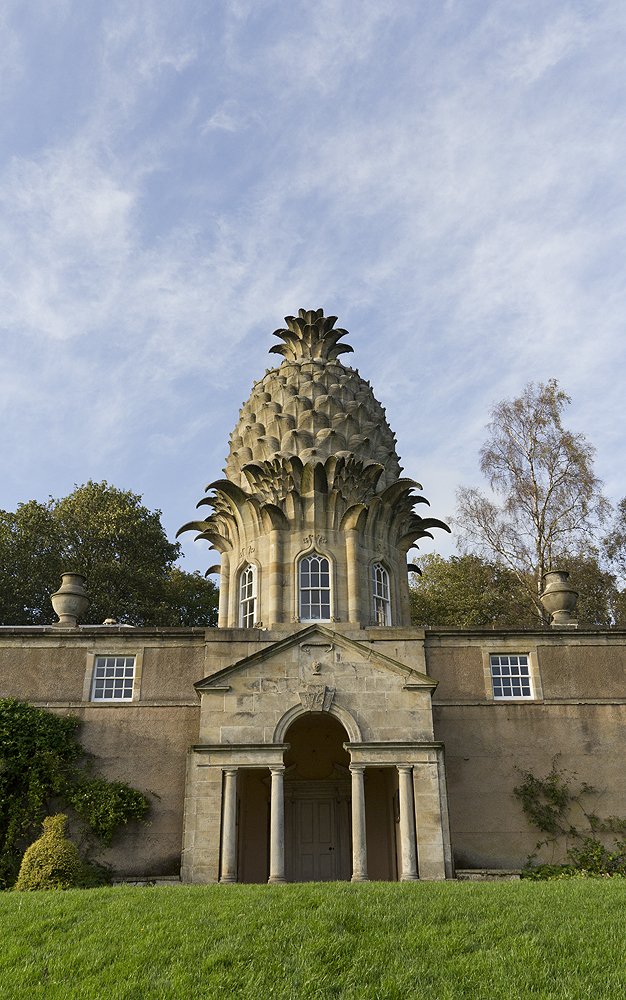
The Dunmore Pineapple House
Dunmore Park, Scotland, 1761
Pineapples were more than a delicious yellow fruit in the 17th century… They were a delicacy worthy of worship. Columbus’ expedition to the Caribbean Island of Guadeloupe brought the first European reports of the elusive pineapple. As soon as Columbus returned home with stories of the fruit, demand grew exponentially. However, it wasn’t that easy to grow pineapples in Europe at the time. It took almost two centuries of attempts and both horticultural and architectural advancements to grow a pineapple. When Charles II of England received a gift of a pineapple he commissioned a portrait to commemorate the important gift. After this, pineapples became a popular symbol of wealth and hospitality.
The 4th Earl of Dunmore, John Murray, was equally as fascinated with the excitingly vibrant fruit. He left his family in Scotland for the Colony of Virginia during the American Revolution. Murray returned to Scotland after serving as the last English Governor of Virginia and with a reputation of lacking “diplomatic skill,” according to Atlas Obscura. He returned to Scotland in July 1776.
When Murray returned home, he went to his summer house at Dunmore, known as the Dunmore House in Scotland. The Palladian-style lower story was built around 1761 is original to the property, and did not gain its 14 meter tall pineapple topper until after Lord Dunmore returned from Virginia in 1777.
“Returning sailors of the time often placed a pineapple, the exotic proof of distant travels, on a gatepost to announce their return from abroad,” according to Atlas Obscura.
The pineapple was Murray’s grand notice that he was home. The large pineapple was placed on top of the house and houses a pavilion inside. The architect for the property is unknown. It is regarded both technically and artistically for the pineapple topper.
The building beneath it serves as a greenhouse for exotic fruit plants and other rare trees, making the property a full garden retreat. Today, the house can be visited and even rented out. However, the site features no bathrooms or amenities so beware.




